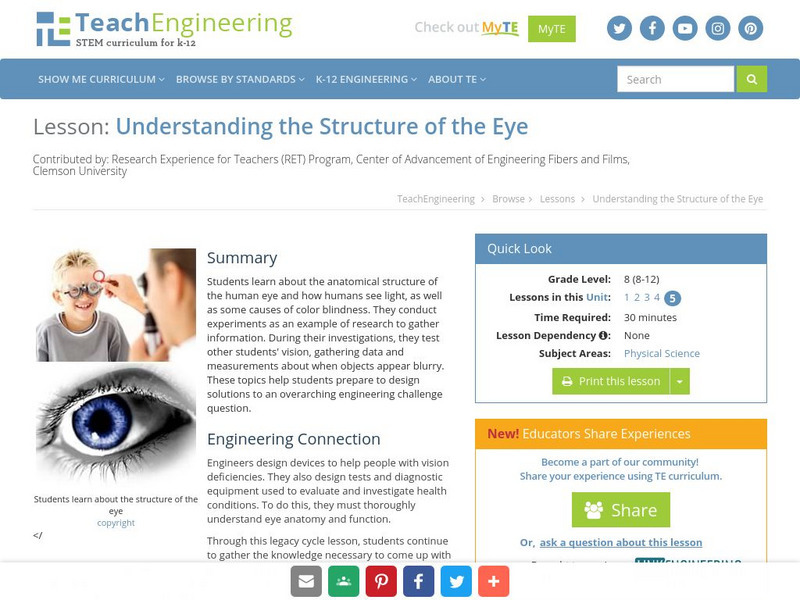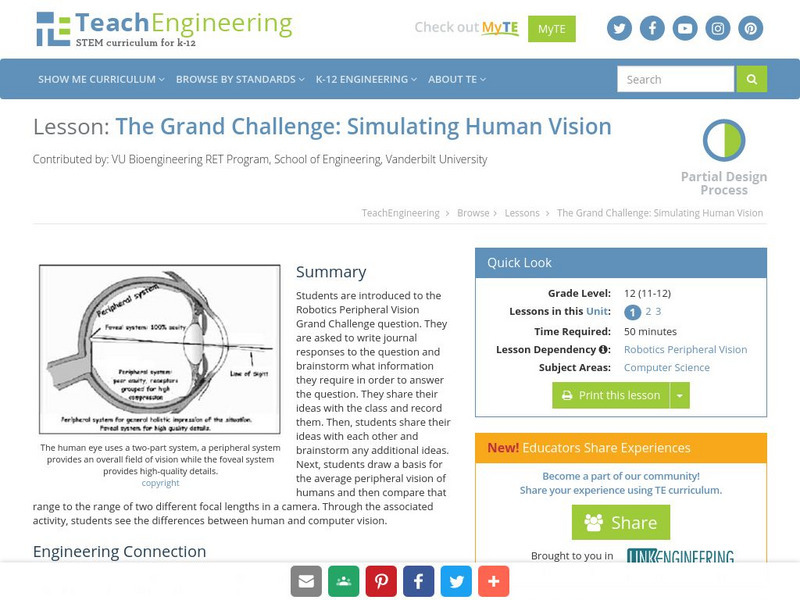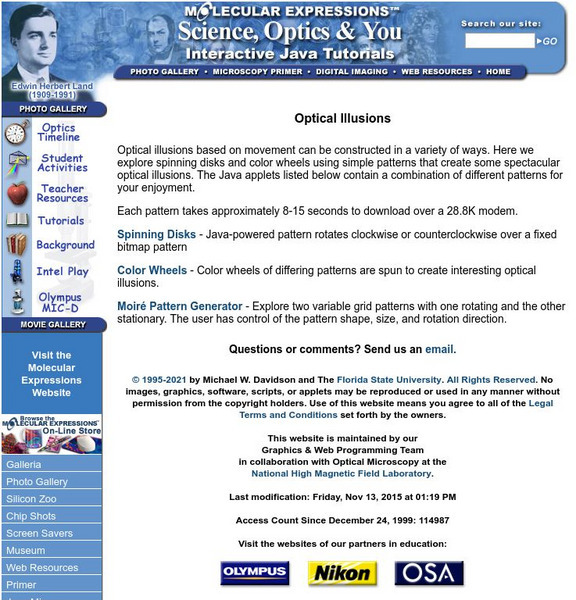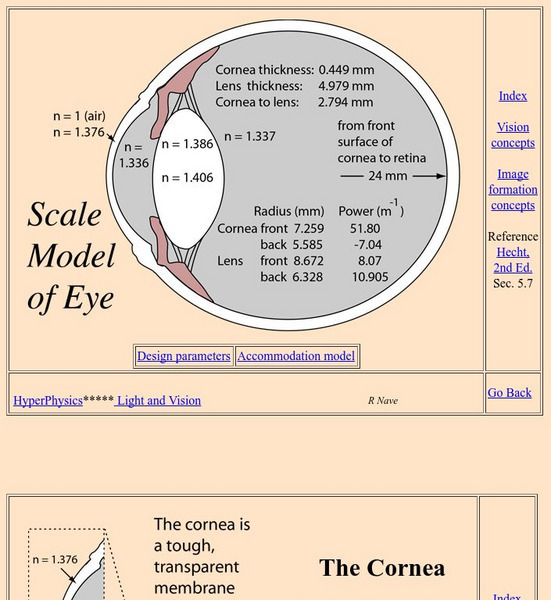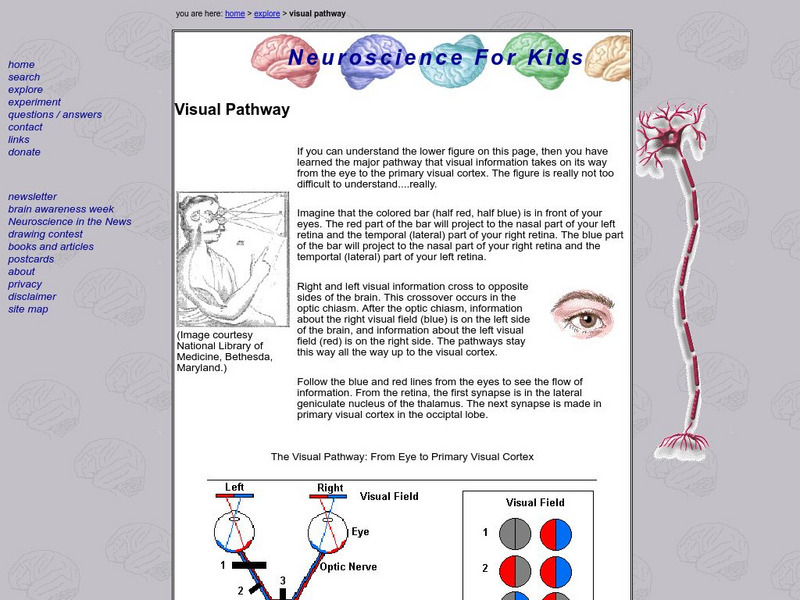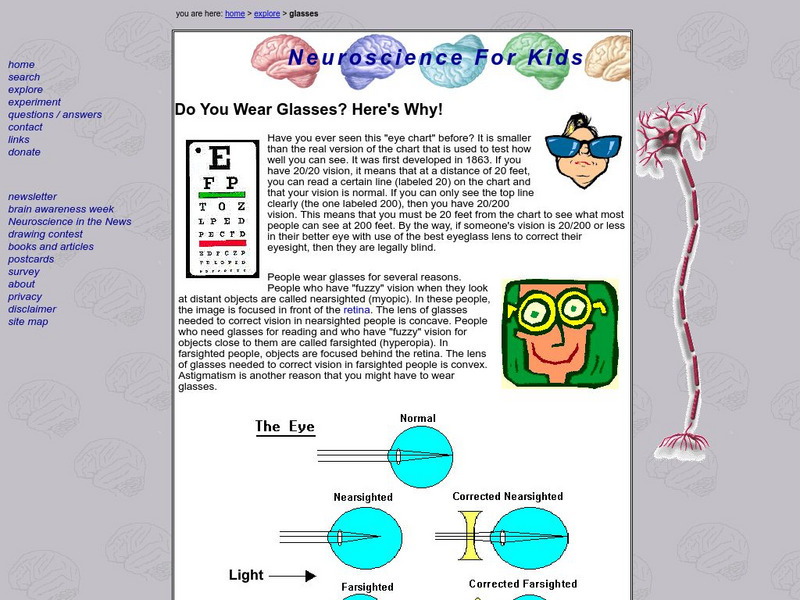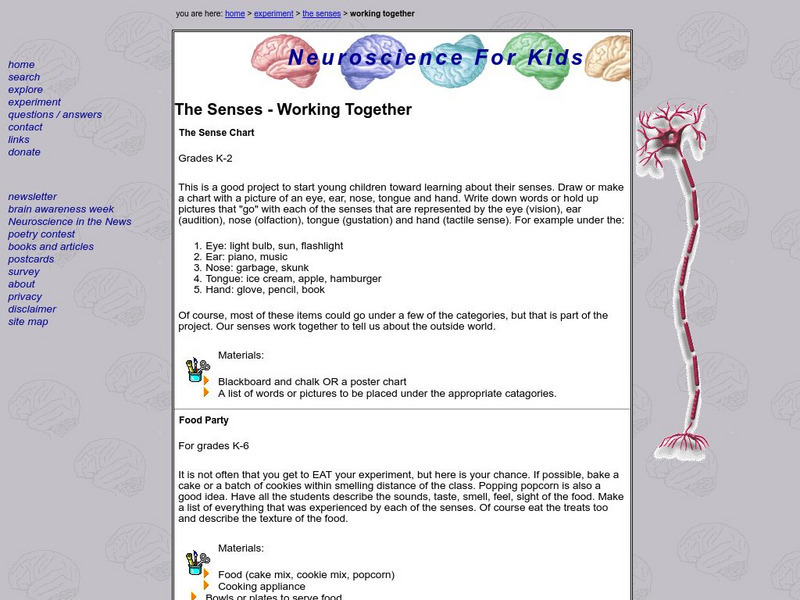TeachEngineering
Teach Engineering: Understanding the Structure of the Eye
Students learn about the anatomical structure of the human eye and how humans see light, as well as some causes of color blindness. They conduct experiments as an example of research to gather information. During their investigations,...
TeachEngineering
Teach Engineering: Biomedical Devices for the Eyes
Middle schoolers examine the structure and function of the human eye, learning some amazing features about our eyes, which provide us with sight and an understanding of our surroundings. Students also learn about some common eye problems...
TeachEngineering
Teach Engineering: The Grand Challenge: Simulating Human Vision
Learners are introduced to the Robotics Peripheral Vision Grand Challenge question. They are asked to write journal responses to the question and brainstorm what information they require to answer the question. Their ideas are shared...
Physics Classroom
The Physics Classroom: Refraction and the Ray Model of Light: Anatomy of the Eye
This tutorial looks at the anatomy of the eye and how the sense of sight works. This is the first part of a learning module. Subsequent sections cover how images are formed and detected, the concept of accommodation where the eye adjusts...
Other
Macular Degeneration Support Group
A very thorough site about Macular Degeneration (MD). Contains MD writings and libraries of information.
TeachEngineering
Teach Engineering: Waves Go Public!
Students apply everything they have learned over the course of the associated lessons about waves, light properties, the electromagnetic spectrum, and the structure of the eye, by designing devices that can aid color blind people in...
TeachEngineering
Teach Engineering: The Three Color Mystery
Young scholars are introduced to an engineering challenge in which they are given a job assignment to separate three types of apples. However, they are unable to see the color differences between the apples, and as a result, they must...
Curated OER
Kids Health: How the Body Works: Eyes
How does the eye work? View a video [5 mins. 9 secs.], check out an article, take a quiz, do an activity, and complete a word search with this comprehensive resource.
Physics Classroom
The Physics Classroom: Refraction and the Ray Model of Light
Six complete lessons on refraction and the ray model of light. Tutorials include informational text, interactive activities, animations, and quick, interactive comprehension checks along the way.
American Academy of Family Physicians
Aafp: Age Related Macular Degeneration
Details on how Age-Related Macular Degeneration is contracted and what types of foods can aid in fighting against it. Includes ideas on how to organize to compensate for lost vision abilities.
Biology Pages
Kimball's Biology Pages: The Human Eye
Written by a former author of Biology textbooks, this page describes not only color vision, but the anatomy of the eye, and color blindness. Easy to understand language.
Florida State University
Florida State University: Optical Illusions
A brief informative site on optical illusions. Includes some beautiful examples of optical illusions such as spinning disks, color wheels, and Moire Pattern Generators.
Georgia State University
Georgia State University: Hyper Physics: Scale Model of Human Eye
A scale model of the human eye is shown. Information about the parts of the eye and the common defects that result from its malfunctioning.
eSchool Today
E School Today: Your Revision Notes on the Five Senses
Learn how the sense organs are structured and how they function to provide you with five senses.
University of Washington
Neuroscience for Kids: The Eye
Easy to understand description of the parts of the eye and their functions. Lots of labeled illustrations. At the bottom of the page additional content includes games, quizzes, lesson plans and activities about vision.
University of Washington
Neuroscience for Kids: The Retina
A not-too-complicated explanation of vision and rods and cones.
University of Washington
University of Washington: Central Visual Pathways
Explore the world of central visual pathways. The visual pathway leads from the eye to the primary visual cortex. There is a detailed visual description of this process. Check it out.
University of Washington
Neuroscience for Kids: Do You Wear Glasses?
Have you ever wondered why you may or may not have to wear glasses? Use this explanation to find out the answer. It outlines the normal eye, the nearsighted eye and the farsighted eye. The diagrams are helpful for a more comprehensive...
University of Washington
University of Washington: The Senses Working Together
This website is dedicated to the "Senses working together." Learn how to play the sensory concentration game at this website and create a sense chart.
University of Washington
Neuroscience for Kids: Reflexes
Site provides interactive activities to use in the classroom to test one's reflexes. Also includes more reaction time experiments as well as links to more fun activities.
Lingolex
Lingolex.com: Learn Spanish: Physical Appearance
Parts of the body and other physical attributes in Spanish can be quickly learned with this fast and effective reference chart. Teacher's can make flash cards to enhance student participation.
CGFA
Carol Gerten Fine Arts: M. C. Escher
This resource provides a very informative biography as well as a gallery with 15 pictures of great Escher art.
Other
The Glaucoma Foundation: Homepage
This site from the Glaucoma Foundation is another great start page to find out about glaucoma and current advances in the field of treatment.
Other
Marine Biological Laboratory: Why Study Marine Organisms for Biomedical Research
Descriptions of various research projects using marine organisms that have direct impact on medical research. The resource has a perspective on how medicine makes progress.


